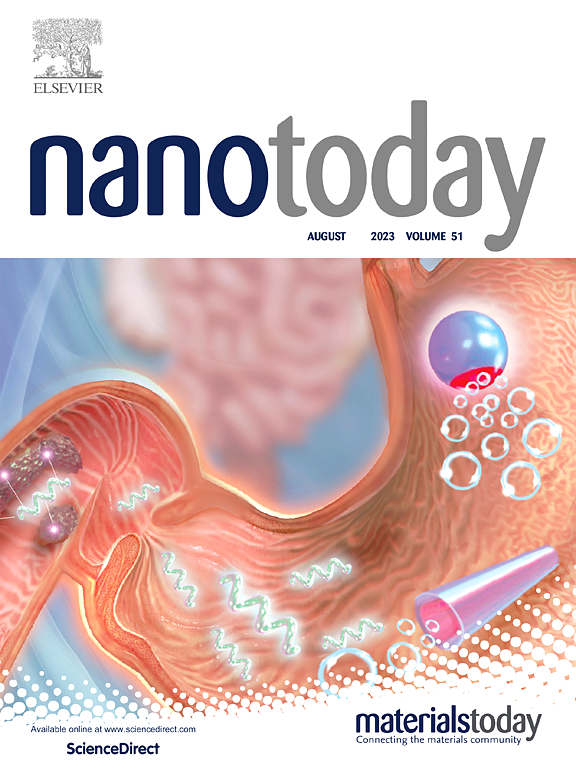纳米医学研究中的癌症模型:对转化纳米医学体外模型的再思考
IF 10.9
1区 材料科学
Q1 CHEMISTRY, MULTIDISCIPLINARY
引用次数: 0
摘要
美国食品和药物管理局最近放宽强制性动物试验要求的举措,重新审视了用于临床前药物开发的体外模型。在纳米医学中,球体、类器官和器官芯片等平台具有先进的机制建模,但这些系统的预测有效性仍然受到它们所结合的细胞系的生物学相关性的限制。本展望批判性地评估了在纳米医学研究中使用一组狭窄的永生化癌细胞系的转化意义-其中许多缺乏与癌症疾病生物学的遗传,表型或人口统计学一致性。通过对50个被引用最多的妇科癌症纳米医学研究的文献回顾,我们发现在超过60 - 80% %的调查出版物中过度依赖三种细胞系。我们进一步表明,尽管越来越多的证据表明纳米药物的临床疗效和毒性存在人群特异性差异,但大多数可用的妇科癌细胞系都是欧洲血统,在全球人群中的代表性有限。这些发现强调了开发管道中的一个关键瓶颈:过度使用缺乏强大临床转化所需的生物学变异性的临床前模型。随着监管框架在临床前评估中越来越优先考虑体外数据,扩大我们的癌细胞模型库的需求变得越来越迫切。我们提出了可操作的策略,以提高模型的代表性和促进早期利益相关者参与临床前研究。通过将这些实践纳入纳米医学开发,该领域可以加强转化结果,潜在地减少后期失败,同时更好地满足全球肿瘤市场的需求。本文章由计算机程序翻译,如有差异,请以英文原文为准。
Cancer models in nanomedicine research: Rethinking in vitro models for translational nanomedicine
The U.S. FDA’s recent move to ease mandatory animal testing requirements has renewed scrutiny of in vitro models used in preclinical drug development. In nanomedicine, platforms such as spheroids, organoids, and organ-on-chip have advanced mechanistic modeling, yet the predictive validity of these systems remains limited by the biological relevance of the cell lines they incorporate. This Perspective critically evaluates the translational implications of using a narrow set of immortalized cancer cell lines in nanomedicine research – many of which lack genetic, phenotypic, or demographic alignment with cancer disease biology. Through a literature review of the 50 most cited studies in gynecologic cancer nanomedicine, we reveal an overreliance on just three cell lines in over 60–80 % of surveyed publications. We further show that most available gynecologic cancer cell lines are of European ancestry, with limited representation of global populations, despite growing evidence of population-specific differences in nanomedicine clinical efficacy and toxicity. These findings underscore a critical bottleneck in the development pipeline: the overuse of preclinical models that lack the biological variability necessary for robust clinical translation. As regulatory frameworks increasingly prioritize in vitro data in preclinical evaluation, the need to widen our cancer cell model repertoire becomes increasingly urgent. We propose actionable strategies to improve model representativeness and foster early stakeholder engagement in preclinical research. By embedding these practices into nanomedicine development, the field can strengthen translational outcomes, potentially reducing late-stage failures while better meeting the needs of the global oncology market.
求助全文
通过发布文献求助,成功后即可免费获取论文全文。
去求助
来源期刊

Nano Today
工程技术-材料科学:综合
CiteScore
21.50
自引率
3.40%
发文量
305
审稿时长
40 days
期刊介绍:
Nano Today is a journal dedicated to publishing influential and innovative work in the field of nanoscience and technology. It covers a wide range of subject areas including biomaterials, materials chemistry, materials science, chemistry, bioengineering, biochemistry, genetics and molecular biology, engineering, and nanotechnology. The journal considers articles that inform readers about the latest research, breakthroughs, and topical issues in these fields. It provides comprehensive coverage through a mixture of peer-reviewed articles, research news, and information on key developments. Nano Today is abstracted and indexed in Science Citation Index, Ei Compendex, Embase, Scopus, and INSPEC.
 求助内容:
求助内容: 应助结果提醒方式:
应助结果提醒方式:


